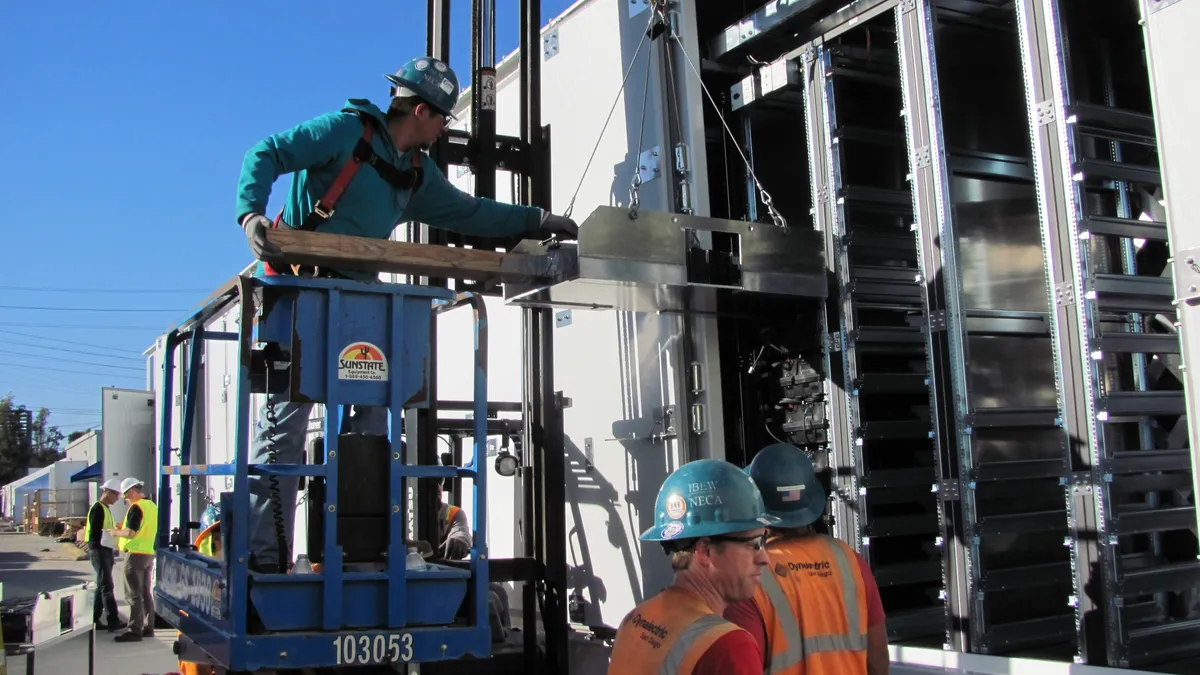Dive Brief:
- The New York Public Service Commission on Thursday approved a suite of measures to advance the state's Reforming the Energy Vision, including new time-based rates for a 12,000-customer smart energy community upstate and changes that could bring additional energy storage onto the distribution grid.
- New York State Electric & Gas' new time-differentiated electric rate options in its Tompkins County smart energy community project will include a range of on-peak and off-peak time periods designed to send strong price signals.
- Other projects getting the green light include an online platform to enable data sharing among energy companies and rules making it easier for farmers to use anaerobic digesters to produce electricity.
Dive Insight:
New York continues to advance the state's REV proceeding, and the steps taken on Thursday touched on a wide range of issues, though all are ultimately aimed at reimagining how the state's grid and utility sector operate.
REV launched in 2014, and spans at least 16 major proceedings, along with the investor-owned utilities’ rate cases.
On energy storage, the PSC said it "opened the door to distributed generation suppliers seeking to connect energy storage technologies to the distribution system, allowing for projects up to 5 MW to come on-line."
Regulators also said they "enhanced" the Standardized Interconnection Requirements application and contract process, in order to make the interconnection process more efficient. Those rules determine how distributed generation developers connect projects to the distribution system, to avoid delay.
In upstate New York, New York State Electric and Gas got approval for new rate structures in its Energy Smart Community project, and can now implement time-differentiated options. Regulators said the pilot rates aim to "convey strong price signals" that focus on the system peak. "For each service classification, the off-peak rates are at least 2.5 times less than the on-peak rates, which send a clear price signal to customers, and provides them with a greater financial incentive to manage their energy usage," the PSC said.
Regulators also directed creation of the Utility Energy Registry, an online platform that will offer public access to customer-load data for the major utilities. With the registry, the PSC also adopted a privacy standard for the provision of whole building data for apartment buildings.
The registry aims to "help create a more information-centered power system," the commission said, supporting the exchange of information among utilities, customers, service providers and other third parties. The project will begin in the middle of this year.
Finally, the PSC determined that Community Distributed Generation projects serving only farm customers are now exempt from some interconnection program rules, including a 10-member minimum requirement. Farm-based generation, including farm digesters, can help the state meet its clean energy goals, regulators said.
New York's REV process has been effective in several ways. Last month, New York Gov. Andrew Cuomo (D) announced $1.4 billion in funding for 26 renewable energy projects, including 22 utility-scale solar farms, three wind farms and a single hydroelectric project.
The projects were selected following a solicitation to support the Clean Climate Careers initiative Cuomo launched last summer with a target of 40,000 new clean energy jobs by 2020.















